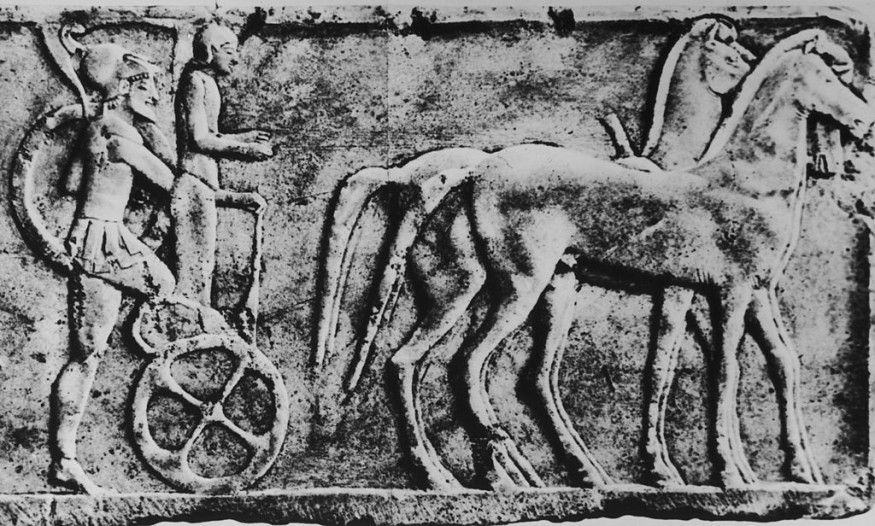Archaeologists discovered an untouched 3,000-year-old grave in Siberia, revealing evidence of horse-drawn chariots in the region for the first time. The grave contained skeletal remains alongside a unique metal attachment for a belt, enabling charioteers to secure reins to their waists. Similar artifacts have been found in Chinese and Mongolian burials.
Aleksey Timoshchenko, an archaeologist from the Russian Academy of Sciences, confirmed to Live Science the artifact's original placement at the person's waist in the undisturbed grave.

An Object With Unknown Purpose
The distinctive hooked metal attachment for a belt as well as direct analogies in burial mounds of China helped archaeologists determine its purpose, says Timoshchenko.
In the Askizsky region of Khakassia, Siberia, under the leadership of Timoshchenko,
Haaretz previously reported that Russian archaeologists under the leadership of Timoshchenko embarked on an expedition to excavate areas in the Askizsky region of Khakassia, Siberia, in preparation for a railway expansion.
The charioteer burial, along with other tombs, was discovered during this month's research near the village of Kamyshta, as Live Science reported.
Consultant archaeologist Oleg Mitko from Novosibirsk State University, who is not a member of the expedition but provides expertise on the findings, explained that similar objects to the "charioteer's belt" had been previously discovered but remained enigmatic. In Russian archaeology, they were labeled as "items of unknown purpose" (PNN).
However, recent findings of Bronze Age charioteer burials in China, including chariots and horse remains, have shed light on the purpose of such objects. Consequently, it is now understood that the belt plate served as an accessory for a chariot.
While no chariots have been uncovered in Siberian burials, the presence of the hooked bronze belt plate in the Late Bronze Age grave suggests its symbolic placement as a substitute for an actual chariot. This discovery adds to the growing body of evidence indicating the use of chariots in different regions during the Bronze Age.
READ ALSO : Tutankhamun: Controversial Theory Challenges Cause of His Death, Suggesting Fatal Drink-Driving Crash
Artifacts Found in the Bronze Age Burial Mound
A translated statement from the researchers said that the charioteer's grave was found among the ones belonging to the Lugav culture dating back approximately 3,000 years. The burial consisted of an earthen mound covering a square stone tomb. Grave goods included a bronze knife, bronze jewelry, and the distinctive belt component.
Timoshchenko explained that the Lugav culture of the Bronze Age primarily engaged in cattle breeding. They were followed in the region by the Scythian people of the Tagar civilization about the seventh century B.C., during the Early Iron Age.
Recent excavations in the region uncovered graves from three distinct periods of the Bronze Age. The earliest graves date back to the 11th century B.C., during the transition period between the Karasuk and Lugav cultures.
The second phase, represented by the charioteer burial, corresponds to the Lugav culture itself. Lastly, the third phase, occurring after the eighth century B.C., belongs to the early Bainov stage of the Tagar culture.
RELATED ARTICLE: Ornate Roman Chariot Near Pompeii Found: Ancient Equivalent of Lamborghini Still "Almost Intact"
Check out more news and information on Archaeology in Science Times.












